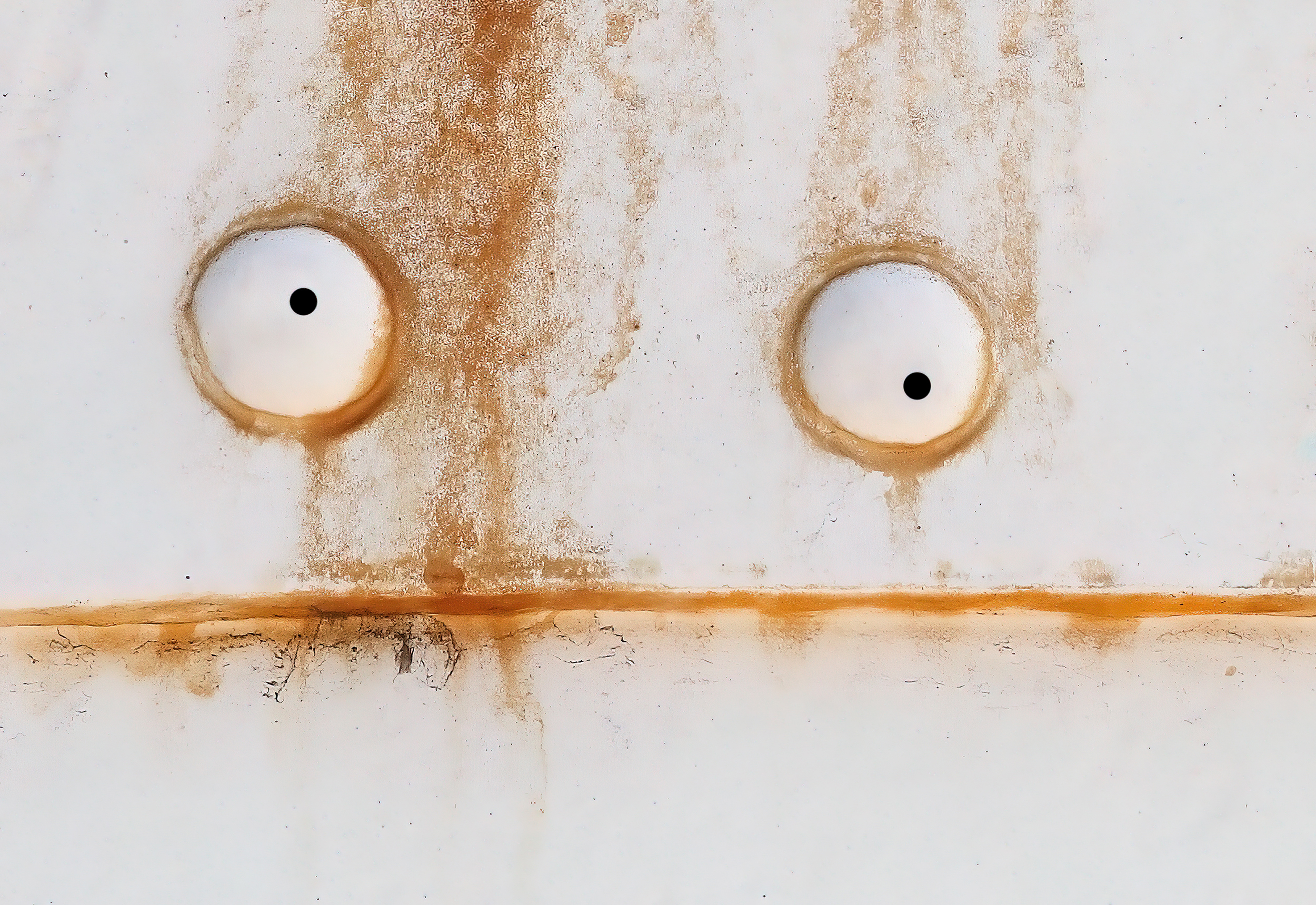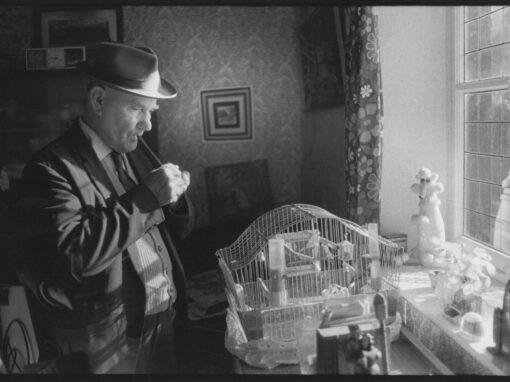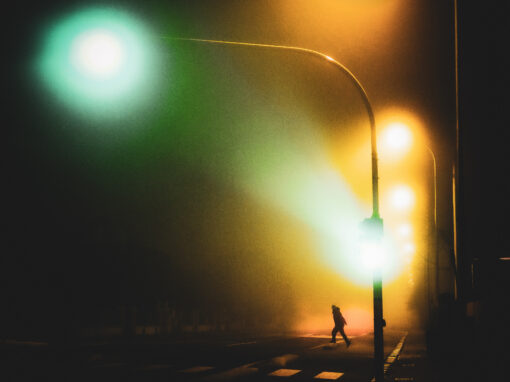The photograph itself is a simple detail of a structure seen and recognized by many hundreds of local people every day in Wollongong: a 19th Century cast iron prefabricated lighthouse, painted white and showing signs of rust. It was imported from England and constructed on the breakwater of a small fishing harbour in this city south of Sydney, Australia.
This was the city where I was born and I have photographed this structure many times in total and in detail, along with a huge variety of other local subject matter, especially following my art teacher training in the 1960s, where my visual experiences were further extended in the context of Abstraction in painting, even before I owned a capable camera.
My concentration on abstract, as well as literal visualization, was extended hugely in my subsequent teaching and curriculum development. The courses I taught after 1976 allowed students’ independent and flexible choice of concept, direction and visualization, and constantly stretched my own seeing, in the process of interpreting their visual ideas and understanding.
Much of my photography while teaching was using colour-slide film to project large-scale visual material (both environmental and art/design examples from books) for classroom discussion of concepts such as colour, motion, distortion, form, and line, well before the internet made such sharing so much more accessible. I could fill a wall with up to four images simultaneously, for comparative discussion. I made many black and white darkroom photographs too, of course, and personal and family photographs as well but only limited actual photographic expression or experimentation. Retirement in 2006 finally gave me time for my own photographic expression and I let it dominate my life.
In this “straight” photograph of a lighthouse detail, the decision to add another layer of interpretation was entirely spontaneous and un-premeditated until a minute before posting in the FRAMES Magazine group. I made the image ready for its own sake, as a visual detail with a simple aesthetic.
A sudden amused “what-if” moment followed: a new layer and a small hard-edged black brush with a random choice of uneven placement. Two clicks later, the “face” that arrived is not only re-seen, but is further “read” as a variety of human reactions and emotions: for me a slight apprehension, uncertainty, puzzlement, curiosity and an element of derangement. The deliberately uneven placement of the dots is an unsettling and “un-natural” pairing, as human focus normally works in stereo
My tendency to “re-see” images (often after I have already recorded and processed them for aesthetic, expressive or documentary reasons) wherever I am in the urban, domestic or natural environment has developed over many years.
I always carry a compact camera with strong zoomability, and my phone camera, and never stop looking. Things tend to find me. I use my DSLRs for studio closeups or rare and special photography excursions but I mostly use my everywhere devices to record the bits of my local world I find interesting and once images are recorded and on my computer screen, either full-frame or cropped, I sometimes find and extend things I did not even see or imagine at the time of capture.
So much of what we know and see about our world comes in through our eyes but is processed by our brain. Photography can celebrate that. I continue to find enjoyment in “seeing sideways” (or expressed in the context of design teaching, “lateral thinking”) and simply a love of play and a dose of Pareidolia.
What do you think are the TWO most impactful features that make your image a good photograph? Don’t be shy!
The suggestion of eye contact, even if imaginary. A play with the potential for change of identity and meaning.
If you would be able to make this photo once again, what would be the ONE thing you would like to do better or different?
If in the same location, I would have the benefit of higher resolution and file size and avoid cropping for the base photograph. The black dot “eyes” were only added as a new layer a few minutes before posting, to reinforce the suggestion of face in the photograph’s structure.
Judy Parker shared this photograph in the FRAMES Facebook Group.
Photographer
Judy Parker, Canberra, Australia
Equipment and settings
Old photo, originally taken in 2008, subsequently cropped as above.
Canon 400D, my first DSLR.




